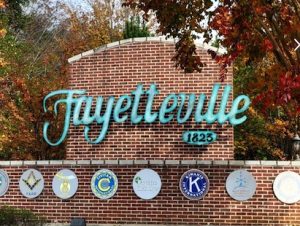Fayetteville voters will have their say July 20 on the proposal to bring an economic revitalization tool to the city. If approved by voters, the referendum would give the city redevelopment powers needed to move ahead with efforts such as the Tax Allocation District (TAD) projects identified last year.
At its core, a TAD is a redevelopment tool that requires voter approval. A qualifying TAD area must be either blighted or distressed, deteriorating or one with inadequate infrastructure.
The council in meetings last year identified three such commercial areas that could benefit from redevelopment activities. Those areas included the 692 Shopping Center on North Glynn Street, the Fayette Place Shopping Center on North Glynn and, potentially, the under-utilized area of the Market Place at Lafayette that is a part of the Villages at Lafayette master plan.
Financing for a TAD comes as the tax base for the project area is frozen to form a base valuation, with property taxes used to pay eligible infrastructure-affiliated redevelopment costs. Bonds may also be issued to help finance projects. Subsequent annual tax revenues in the project area are used to fund the city’s portion of the redevelopment.
Redevelopment powers will not change the existing method of setting property taxes. TAD financing does not rely on tax increases from properties that are not subject to redevelopment. The tax applies only to those property owners who choose to have their land included within the TAD area.
Specific TAD projects must also gain approval from the Fayette County Commission and Board of Education since the property tax revenues generated in the TAD project area would stay there during the project period to help defray the costs of the infrastructure and other improvements designated in the project document.
Essentially, a TAD is not a new tax but rather a diversion of existing taxes in a specific geographic area to be used for redevelopment purposes. TAD property taxes can also be used to pay on any public or private bond that might be associated with the TAD project.
TADs help local governments attract private development and new businesses which create jobs, attract customers and in turn, generate additional private investment in areas that have experienced stagnant or declining growth without putting pressure on the current tax base and taxpayers. After a set amount of time the TAD ends, and as a result of the new development on the properties, the values of the properties increase, city staff said.
Georgia’s most visible example of a Tax Allocation District project is Atlantic Station near downtown Atlanta.












Leave a Comment
You must be logged in to post a comment.